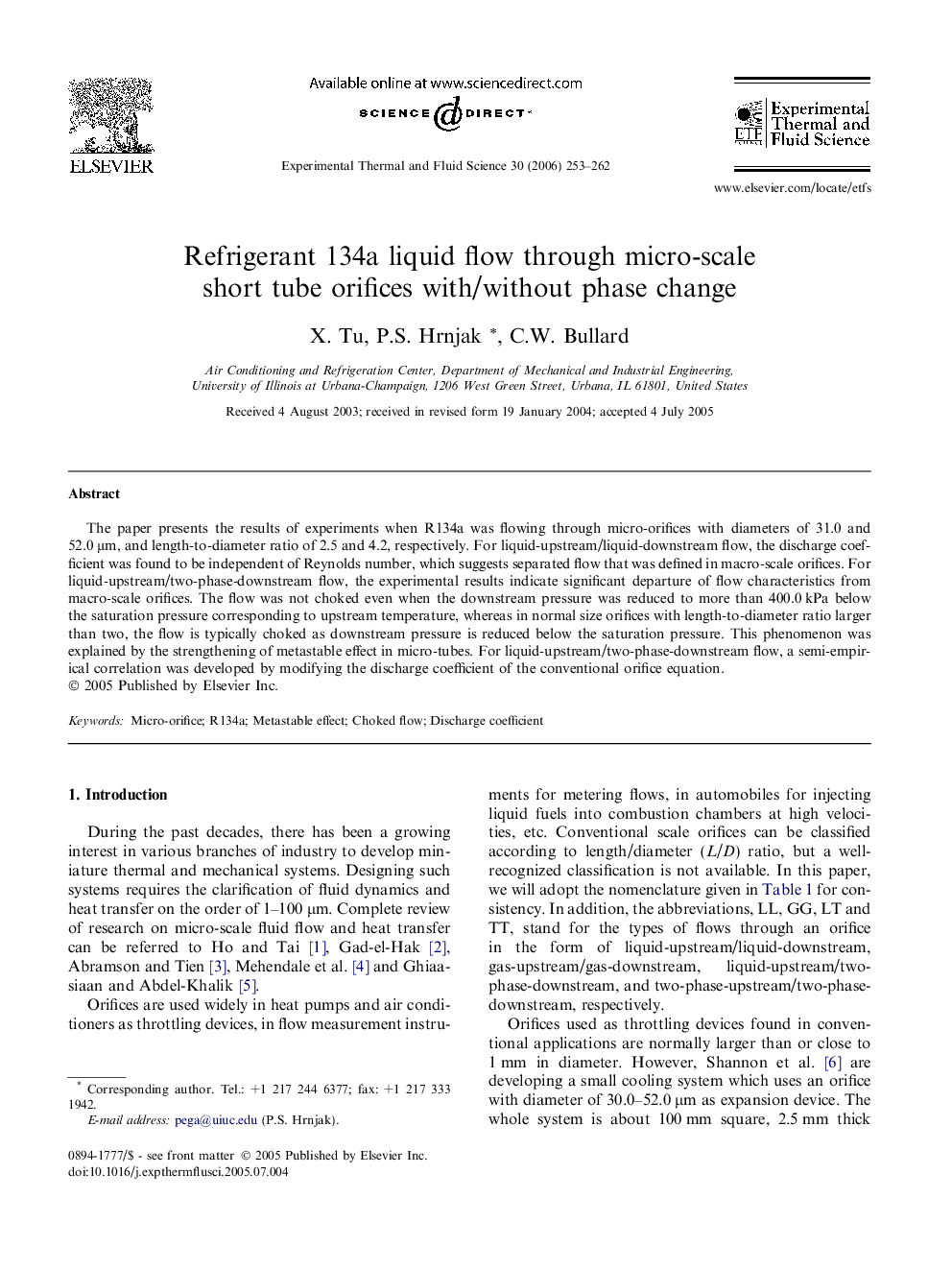| Article ID | Journal | Published Year | Pages | File Type |
|---|---|---|---|---|
| 652766 | Experimental Thermal and Fluid Science | 2006 | 10 Pages |
The paper presents the results of experiments when R134a was flowing through micro-orifices with diameters of 31.0 and 52.0 μm, and length-to-diameter ratio of 2.5 and 4.2, respectively. For liquid-upstream/liquid-downstream flow, the discharge coefficient was found to be independent of Reynolds number, which suggests separated flow that was defined in macro-scale orifices. For liquid-upstream/two-phase-downstream flow, the experimental results indicate significant departure of flow characteristics from macro-scale orifices. The flow was not choked even when the downstream pressure was reduced to more than 400.0 kPa below the saturation pressure corresponding to upstream temperature, whereas in normal size orifices with length-to-diameter ratio larger than two, the flow is typically choked as downstream pressure is reduced below the saturation pressure. This phenomenon was explained by the strengthening of metastable effect in micro-tubes. For liquid-upstream/two-phase-downstream flow, a semi-empirical correlation was developed by modifying the discharge coefficient of the conventional orifice equation.
